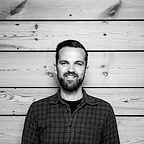Redesigning International Development Work for the SDG ERA
& Christian Villum, Director of Digital and Future Thinking
(This article was originally posted on the Danish Design Centre website on Sep 13, 2019 – it is cross-posted here for archival purposes.)
It seems like a paradox: We are living in a world of unprecedented uncertainty, but at the same time, leaders working in international development have unprecedented access to knowledge, creativity and increasingly affordable technology. We have never had more opportunities for shaping new, long-lasting partnerships across the public and private sector that will ultimately help us achieve the UN Global Sustainable Development Goals — the SDGs.
So, where’s the rub? How can we design platforms that connect the vast knowledge and multiple stakeholders needed to secure long-term collaboration and solutions that create true impact?
Networked governance for a networked world
As a government-funded institution, the Danish Design Centre’s mission is to empower firms, individuals and public organisations to unleash new sources of value through design. We apply design methods as we help organisations optimise their sourcing of knowledge from all relevant parties — including the “non-usual suspects”, such as the private sector, civic activists, and individuals.
This past year, we have worked intensely with one of the biggest organisations in the UN — the United Nations Development Programme (UNDP) — to address this exact issue. Together with UNDP entities across the globe, we have helped create platforms that connect all relevant knowledge networks for solving specific challenges — what we call “platform-way-of-working.”
View and download the tools we have used in our collaboration with the UNDP here.
By incorporating this new approach, the UNDP has moved from a conventional project-oriented approach to a design-driven mindset, embracing a more diverse set of stakeholders in its decision-making processes. This transition not only leverages the UNDP’s resources with a much bigger pool of public/private funds and initiatives, but also emphasizes the UNDP’s facilitating role and distributes responsibility more evenly among the stakeholders.
In a world of increasingly complex networks, where new knowledge and influence can show up anywhere and be rapidly disseminated everywhere, we need an interconnected approach to problem-solving.
Experimenting in 40+ countries
Last year, the Danish Design Centre worked with 40+ UNDP country offices and an international advisory board to facilitate the transition to a platform approach. Using design methodology, we developed a customized toolbox, fit for each country’s needs, and tested and revised the tools in close collaboration with select UNDP country offices. You can read about some of the cases here.
What are the early learnings?
1. Platforms enable organisations to quickly identify non-traditional partners and hereby develop higher quality solutions.
In Ukraine, the Danish Design Centre has assisted the UNDP in establishing a digital marketplace for services and resources available to homeowners and homeowners’ associations to boost energy efficiency in residential buildings. In order to set up this platform, UNDP is mobilising the expertise of both traditional and non-traditional actors like construction companies, energy efficient solutions suppliers, homeowners’ associations and residents (individuals). By activating these networks, the UNDP will be able to help identify better development solutions that reflect the genuine needs of stakeholders and begin to bridge investment gaps.
2. Organisations create new types of engagement — both digital and physical — that can generate new interactions through platforms.
In Rwanda, where over 70% of young people are underemployed, the YouthConnekt platform, supported by the UNDP, provides an integrated physical and virtual platform to enable youths to create employment opportunities and engage actively in their communities, supported by a partnership spanning the private sector, youth groups, international organizations, government, banks and NGOs. The platform has already helped create 8,000 new jobs, enabled 1 million young people to engage in volunteer community service, and engaged over 4 million young women and men in activities that promote positive values and attitudes, nurturing a new generation of leaders. YouthConnekt has expanded to Cape Verde, Congo, the Democratic Republic of Congo, Liberia, Sierra Leone, Uganda and Zambia.
Development by design
As the UNDP moves forward with platform-way-of-working, the primary aim is to learn more about how these principles are being applied in diverse development contexts across the world, and how they generate different solutions to sticky problems. The lessons drawn from this partnership between the UNDP, the Danish Design Centre and an associated international advisory board will not only have the potential to transform international development work, but will also be scalable in any organization working to navigate a complex ecosystem in a volatile world.
In a world of increasingly complex networks, where new knowledge and influence can show up anywhere and be rapidly disseminated everywhere, we need an interconnected approach to problem-solving. In international development work, in business and everywhere else.
